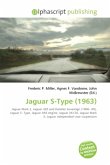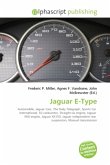The Jaguar D-Type, like its predecessor the C-Type, was a factory-built race car. Although it shared the basic straight-6 XK engine design (initially 3.4L and eventually uprated to 3.8 litres in the late fifties) with the C-Type, the majority of the car was radically different. Perhaps its most ground-breaking innovation was the introduction of a monocoque chassis, which not only introduced aircraft- style engineering to competition car design, but also an aeronautical understanding of aerodynamic efficiency. The D- Type was introduced purely for competition, but after Jaguar withdrew from racing, the company offered the remaining, unfinished chassis as the roadgoing Jaguar XKSS, by making changes to the racers: adding an extra seat, another door, a full-width windshield and primitive folding top, as concessions to practicality. However, on the evening of 12 February 1957, a fire broke out at the Browns Lane plant destroying nine of the twenty five cars that had already been completed or in semi-completion. Production is thought to have included 53 customer D-Types, 18 factory team cars, and 16 XKSS versions.








